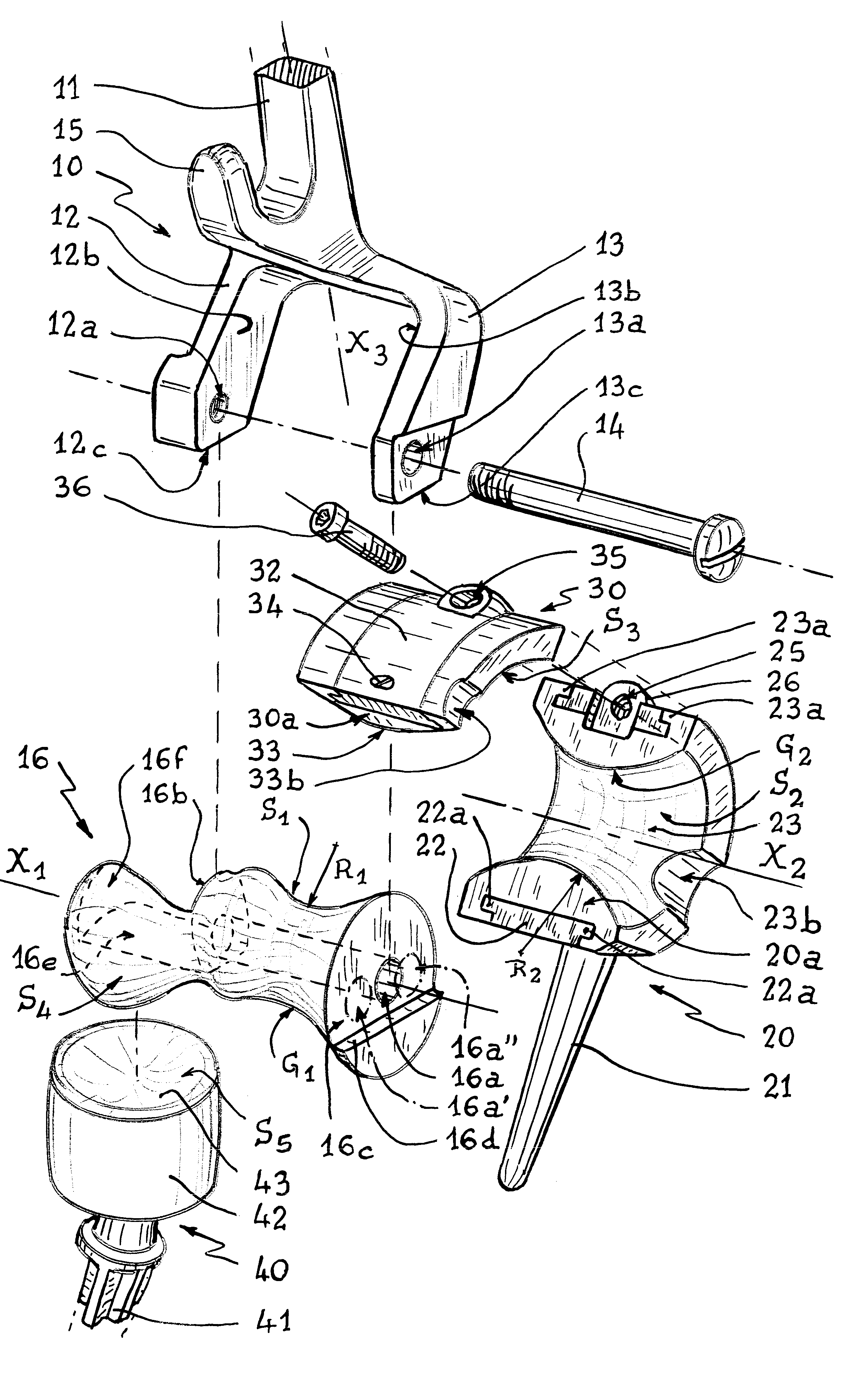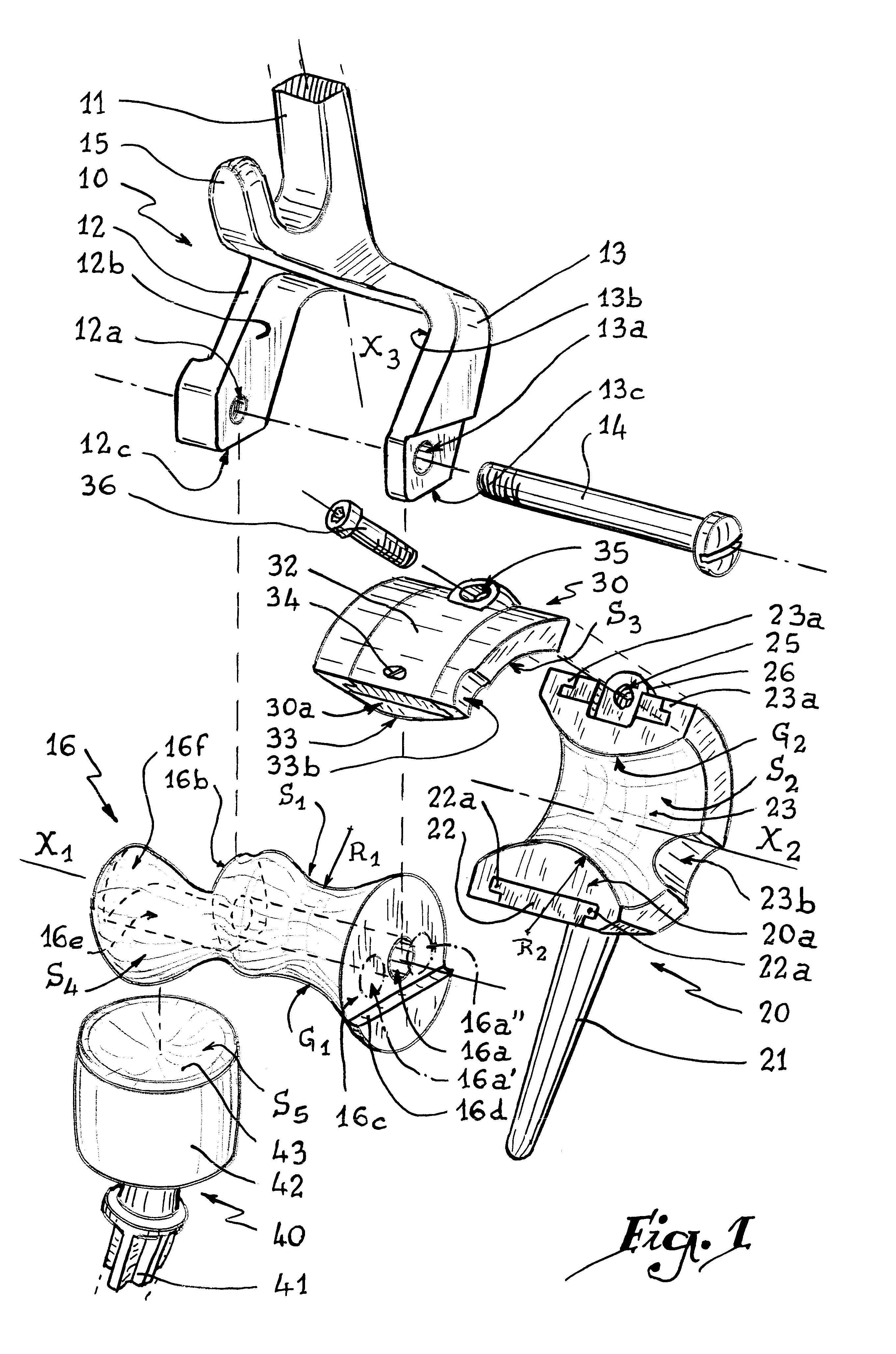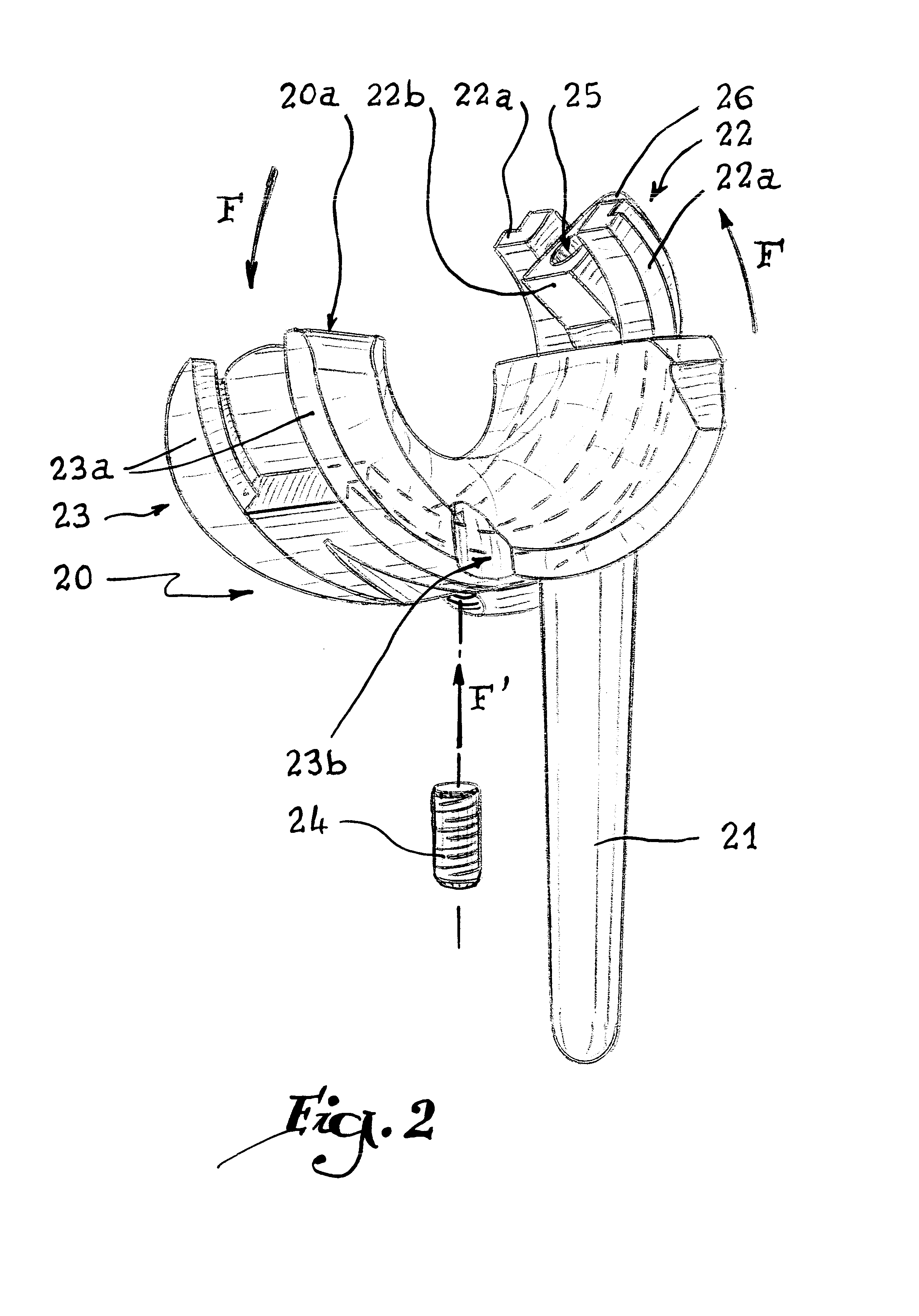Elbow prosthesis
a technology for elbows and prostheses, applied in the field of elbow prostheses, can solve the problems of premature wear of articulating surfaces, inducing parasitic movements, and considerable risk of dislocation or transverse instability
- Summary
- Abstract
- Description
- Claims
- Application Information
AI Technical Summary
Benefits of technology
Problems solved by technology
Method used
Image
Examples
Embodiment Construction
Referring now to the drawings, the prosthesis visible in FIGS. 1 to 6 comprises a humeral component 10 presenting a rod 11 intended to be driven in the medular channel of a humerus H and extending in two tabs 12 and 13 each pierced with an orifice 12a or 13a for passage of a screw 14 forming shaft. Orifice 12a is tapped, which enables it to cooperate with the outer threading of screw 14.
The rod 11 also extends in a third tab 15 intended to abut against the cortex of the humerus H and to prevent a possible forward tipping of the humeral rod.
An elongated piece 16 is provided with a central bore 16a whose dimensions allow it to receive the screw 14. Two end surfaces 16b and 16c of the piece 16 are provided to come respectively into contact with the opposite surfaces 12b and 13b of the tabs 12 and 13, while screw 14 traverses the orifices and bores 13a, 16a and 12a.
In this position shown in FIGS. 3 to 6, an end surface 13c of the tab 13 is in abutment against an end shoulder 16d of the ...
PUM
 Login to View More
Login to View More Abstract
Description
Claims
Application Information
 Login to View More
Login to View More - R&D
- Intellectual Property
- Life Sciences
- Materials
- Tech Scout
- Unparalleled Data Quality
- Higher Quality Content
- 60% Fewer Hallucinations
Browse by: Latest US Patents, China's latest patents, Technical Efficacy Thesaurus, Application Domain, Technology Topic, Popular Technical Reports.
© 2025 PatSnap. All rights reserved.Legal|Privacy policy|Modern Slavery Act Transparency Statement|Sitemap|About US| Contact US: help@patsnap.com



